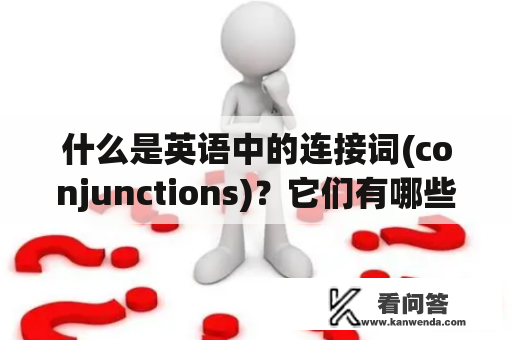什么是英语中的连接词(conjunctions)?它们有哪些种类和用法?
连接词在英语语法中起着极为重要的作用。作为一种虚词,连接词用来连接句子、短语、单词或其他语法成分,以便更好地表达和传达意思。英语中有三种类型的连接词,分别是并列(conjunctions of coordination),从属(conjunctions of subordination)和连词(adverbs of conjunction),它们各自有着自己的语法作用和用法规则。

并列连接词用来连接两个或多个平行或独立的句子或短语,起到将它们并列在一起的作用。常见的并列连接词有and、or、but、nor、yet和so。例如,“I like coffee, and my friend likes tea.” (我喜欢咖啡,我的朋友喜欢茶。)或者“Do you want to stay in or go out?”(你想留在家还是出去?)
从属连接词用来连接一个主句和一个从句,将它们合并在一起,形成一个复杂的句子。从属词可分为三类:时间、条件和原因/结果。常见的从属词有when、while、if、unless、because、since、although、whereas、in order that和so that。例如,“I will go to bed when I finish my book.”(我看完书后就睡觉。)或者“If it rains, we will stay at home.”(如果下雨,我们就待在家里。)
连词是一种广义上的连接词,它们不仅可以连接句子、短语或词语,还可以用来表示时间、位置、方位、程度等其他含义。常见的连词有after、before、since、until、where、wherever和however。例如,“I went to bed after I finished my book.”(我看完书后才睡觉。)或者“Where there’s a will, there’s a way.”(有志者事竟成。)
无论是什么类型的连接词,它们都在英语中起到了至关重要的作用。掌握它们的用法和规则可以帮助我们更好地理解和使用英语,有效地表达我们的意思。
连接词(conjunction)、并列(conjunctions of coordination)、从属(conjunctions of subordination)、连词(adverbs of conjunction)、英语语法(grammar)
